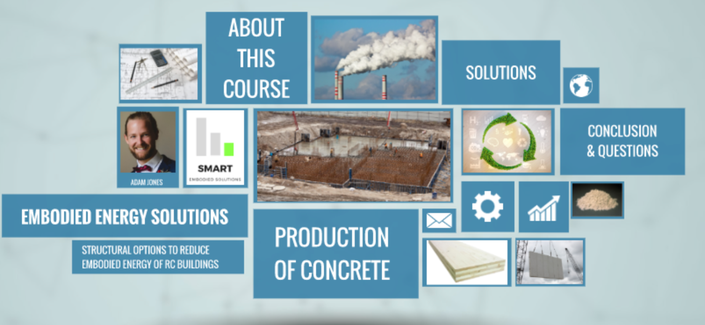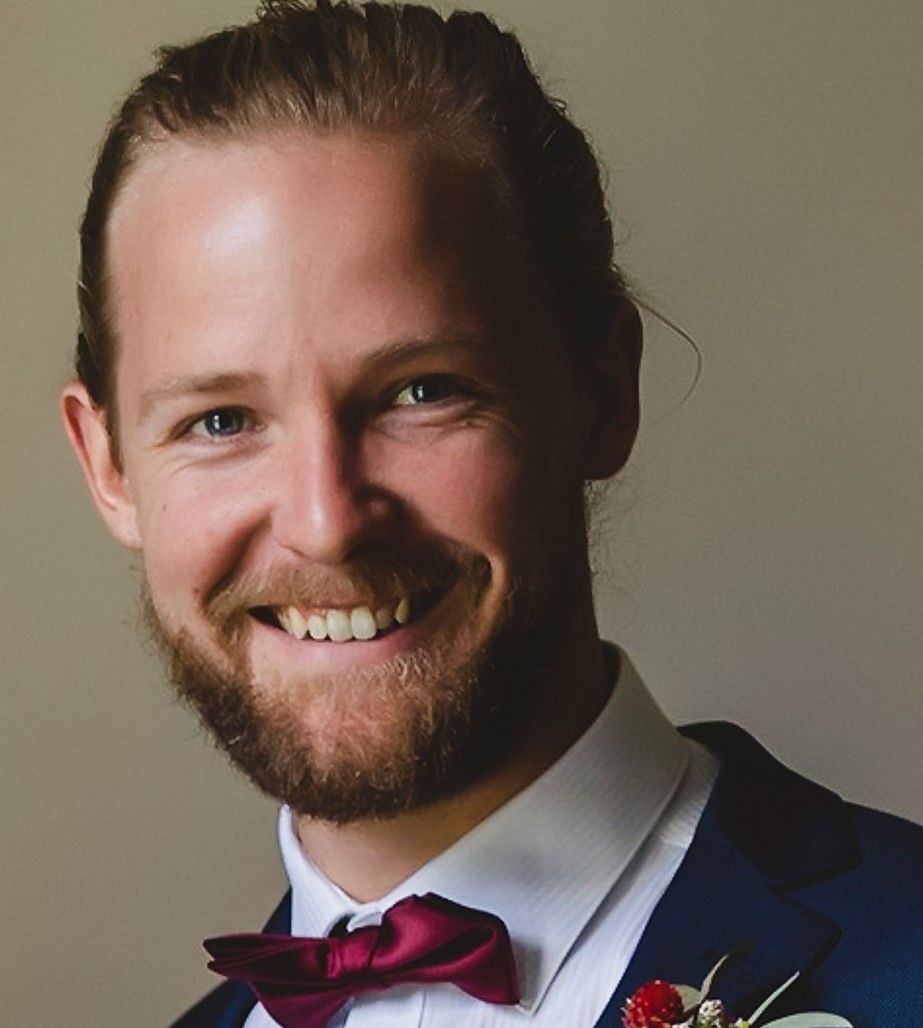
Embodied Energy Solutions for Concrete Buildings
Structural Options to Reduce Embodied Emissions of Concrete Buildings
Watch Promo
Who is this course for?
If you are in the buildings industry and want to enhance your skillset in sustainable design, then this is for you. This online course is a bit like doing a Masters. You will not get the certificate and be able to add something substantial on your CV, but you will get specialised knowledge on an area that is scarce in the buildings industry, in under and hour and for under 50$.
Why is this knowledge valuable?
Cement is 8% (more than cars!) of the worlds Greenhouse Gas emissions, despite this it rarely gets mentioned on the topic of climate change. The world has agreed that we need to get to zero emissions by 2050 in order to have a good shot at limiting the temperature rise below two degrees. Simultaneously, the operational component of our buildings is improving. If you conducted a life cycle analysis of a concrete building, traditionally the operational component would be 70-90%. But with our electricity grids, construction envelopes and energy efficiencies improving, the operational energy improvements are rapid - leaving proportionally a larger impact of cement. You can hence expect this to be increasingly valuable knowledge in the coming years.
What will you learn?
This course provides the playbook for reducing embodied energy emissions of concrete buildings. This course focuses on the most practical six solutions.
1. Utilising efficient design
2. When to best use supplementary cementitious materials (SCM)
3. When is it best to use timber products
4. When is it best to use geopolymer concrete
5. When to suggest design for adaptability
6. When to leverage concretes thermal mass
Your Instructor

Hi my name is Adam Jones. My background is as a structural engineer, experience as a sustainability consultant and have been a lead researcher for Beyond Zero Emissions as a lead researcher on the Rethinking Cement report. Ever since hearing that embodied emissions of cement is 8% (more than cars), I have been determined to find ways to get this as low as possible.
I am also the host of The Future of Structures Podcast, where we speak to the experts who are evolving our buildings to meet our challenges of tomorrow. Previous guests include Jannie Van Deventer (founder of Zeobond), Jay Sanjayan (Director of Swinburne's Centre for Sustainable Infrastructure) and John Provis (Professor of Cement Materials Science, Sheffield University).
You can reach me at [email protected]
Course Curriculum
-
PreviewIntroduction to Solutions (0:32)
-
PreviewEnvironmental Impact of Portland Cement (4:28)
-
StartWhy Engineers Love Concrete (1:28)
-
StartMore Efficient Design (3:32)
-
StartHigh strength concrete for efficient design (1:16)
-
StartUsing Timber Sustainably (1:12)
-
StartOpportunities for Using Timber (5:04)
-
StartIntroduction to Supplementary Cementitious Materials (2:44)
-
StartOpportunities for Use of Supplementary Cementitious Materials (4:42)
-
StartAbout Geopolymer Concrete (1:40)
-
StartOpportunities for Using Geopolymer Concrete (2:07)
-
StartAbout Design for Adaptability and Deconstruction (1:39)
-
StartWhy do buildings get demolished? (0:49)
-
StartOpportunities for Adaptive Design (4:22)
-
StartThank you! (0:28)
-
StartUsing Concretes Thermal Mass (0:59)
What are my sources of information?
In creating this course, I have packaged up content from the worlds top sources to answer the question, 'how to reduce the embodied energy of concrete buildings? The sources I draw upon include:
Textbooks:
- Sustainability Guidelines for the Structural Engineer - by American Society of Civil Engineers
- Sustainable Materials Without The Hot Air - by Jonathan M. Cullen and Julian M. Allwood
- Tall Wood Buildings - by Michael Green
Podcast Episodes:
- Jannie Van Deventer, founder of Zeobond Geopolymer Activation Technology. Topic Geopolymer Cement
- Professor John Provis, Professor of Cement Materials Science, Sheffield University. Topic Supplementary Cementitious Materials
- Professor Jay Sanjayan, Director of Swinburne's Centre for Sustainable Infrastructure. Topic 3D Printed Geopolymer Buildings
- Jonas Bengtsson, Founder of Edge Environment. President of Australian Life Cycle Assessment Society. Topic Life Cycle Assessment of Buildings
- Michael Lord, Head of Research BZE. Topic Rethinking Cement Report

